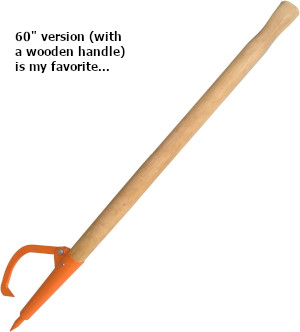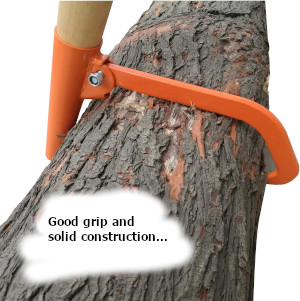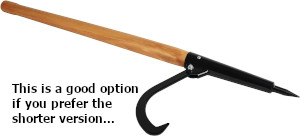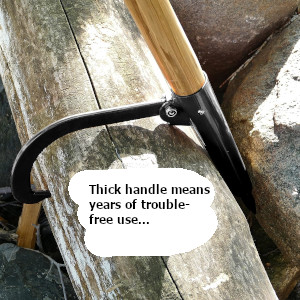 I am sick – really sick – of using little tiny plastic forks.
I am sick – really sick – of using little tiny plastic forks.
I’m a big dude. I stay active, I work up an appetite, and so I tend to eat big.
You have to admit, it sucks so bad to dig into a meal with a goofy plastic fork only to accidentally snap it in two or break off one of the tines.
Okay, I realize this strays pretty far from my normal chainsaw topics. But let me explain.
How Titanium Forks Relate to Chainsaws
 I’ve mentioned before that some saw jobs I do are in deep country.
I’ve mentioned before that some saw jobs I do are in deep country.
Not too long ago, I was describing a chainsaw backpack that is great for getting all of my gear to the middle of nowhere if I get hired for a job like that. You can check out my backpack review HERE.
It’s not unusual for me to pack a lunch.
Whether I’m working out of the back of my truck, or backpacking gear several miles, I definitely don’t like to go hungry.
 I’m not against going out to lunch, but I’m all about getting work done. It just seems more efficient if I pack my own meal, sort of eat on the run. It saves me from driving somewhere, waiting in line, etc.
I’m not against going out to lunch, but I’m all about getting work done. It just seems more efficient if I pack my own meal, sort of eat on the run. It saves me from driving somewhere, waiting in line, etc.
Sometimes that’s just a sandwich, sometimes it’s more like a real meal. By real meal I mean like leftovers from the night before, haha.
After breaking off 2 of the 5 plastic tines of my plastic fork the other day, I was pretty exasperated. It’s pretty hard to eat a leftover chicken breast with a damaged utensil that resembles a toothpick!
So I started looking for some camping or backpacking utensils that I could use to eat my lunch while on a chainsaw job.
Moe’s Southwest Grill Plastic Fork Tease
Issue number one, chainsaw job vs plastic fork.
Issue number two, OMG Moe’s are you kidding me?

I tend to like Tex/Mex food. There is a Moe’s Southwest Grill not far from my house, and I eat there frequently.
They have the cheapest, most useless plastic utensils in the universe.
I’m not kidding you, they aren’t even fit for a four year old. They bend and break, and they are tiny.
Maybe all Moe’s restaurants don’t use these, I don’t know. Maybe it’s only my local place that is too lazy to wash and use metal forks. Leave a comment down below if you get a chance and let me know what your experience has been.
This, combined with my need for something to pack in my lunch for chainsaw job had me looking for some kind of backpacking utensils.
Snow Peak Titanium Utensils
Enter this little kit from Snow Peak.
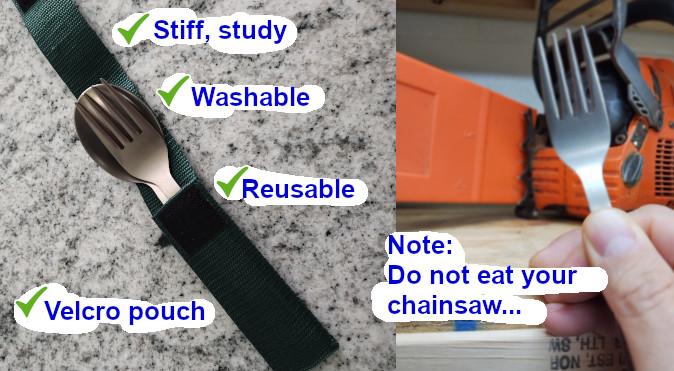
I found a few options online for normal, basic stainless steel utensils. Some of them were even collapsible. Err, ok, but I don’t want “some assembly required”. And leave it to me to lose half of my fork under a tree stump!
I ended up choosing the Snow Peak set for several reasons.
They make them out of aerospace-grade titanium alloy mainly because it is such a light material, which can be important for backpackers. That’s cool, but a few ounces of weight isn’t really a deal killer to me.
The titanium is very stiff. Which I like. And also it’s inert, and won’t rust.
I liked the little velcro pouch the knife and spoon come in. It makes it easier to toss into my gear bag without losing them or having them become separated. It’s made out of nylon, so when it gets dirty I can just throw it in the washing machine or even give it a scrub outside under the garden hose.
Lastly, I liked the fact that their company has been around for 60 years.
They make good quality stuff, and they are proud of what they do. It’s not US based, bummer, but it’s a craftsman-like Japanese company and I give them a certain amount of credit for standing out in a crowd.
So go buy yourself a set, and quit screwing around with plastic forks!
I’ll try to remember to tell you guys sometime about the tactical lunch box I use.
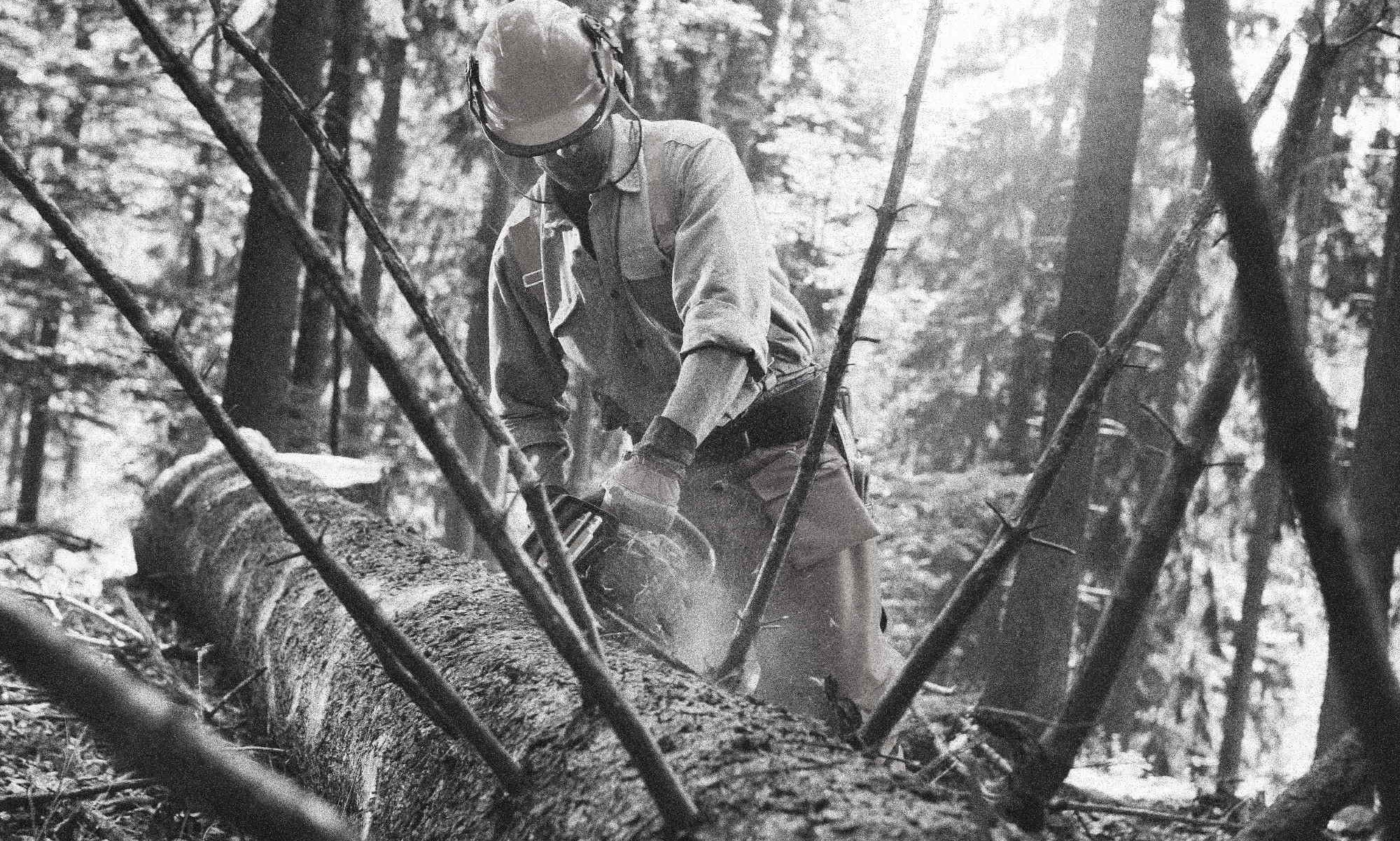
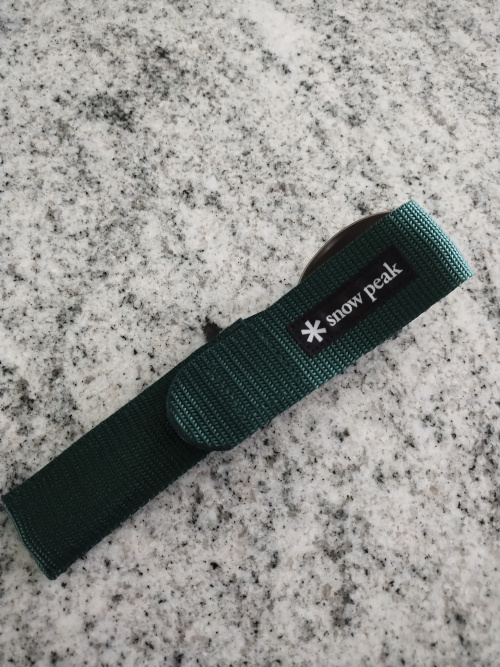
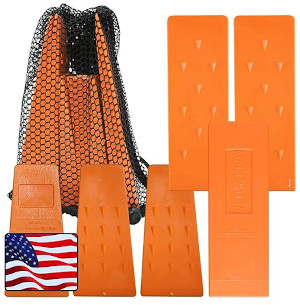

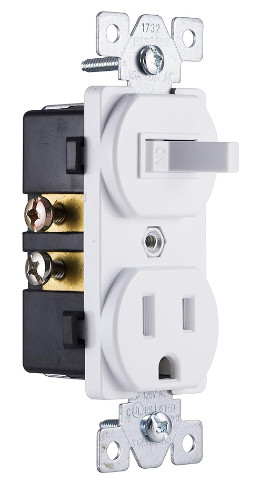

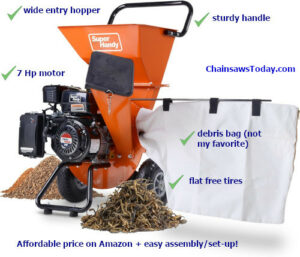
 If you’ve been hanging around ChainsawsToday for very long, you know I’m not prone to drama or histrionics. But I’m a firm believer that every home needs a backup heat source.
If you’ve been hanging around ChainsawsToday for very long, you know I’m not prone to drama or histrionics. But I’m a firm believer that every home needs a backup heat source.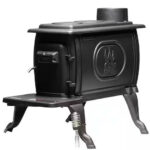 I am going to give you some tips about stacking and storage.
I am going to give you some tips about stacking and storage.

